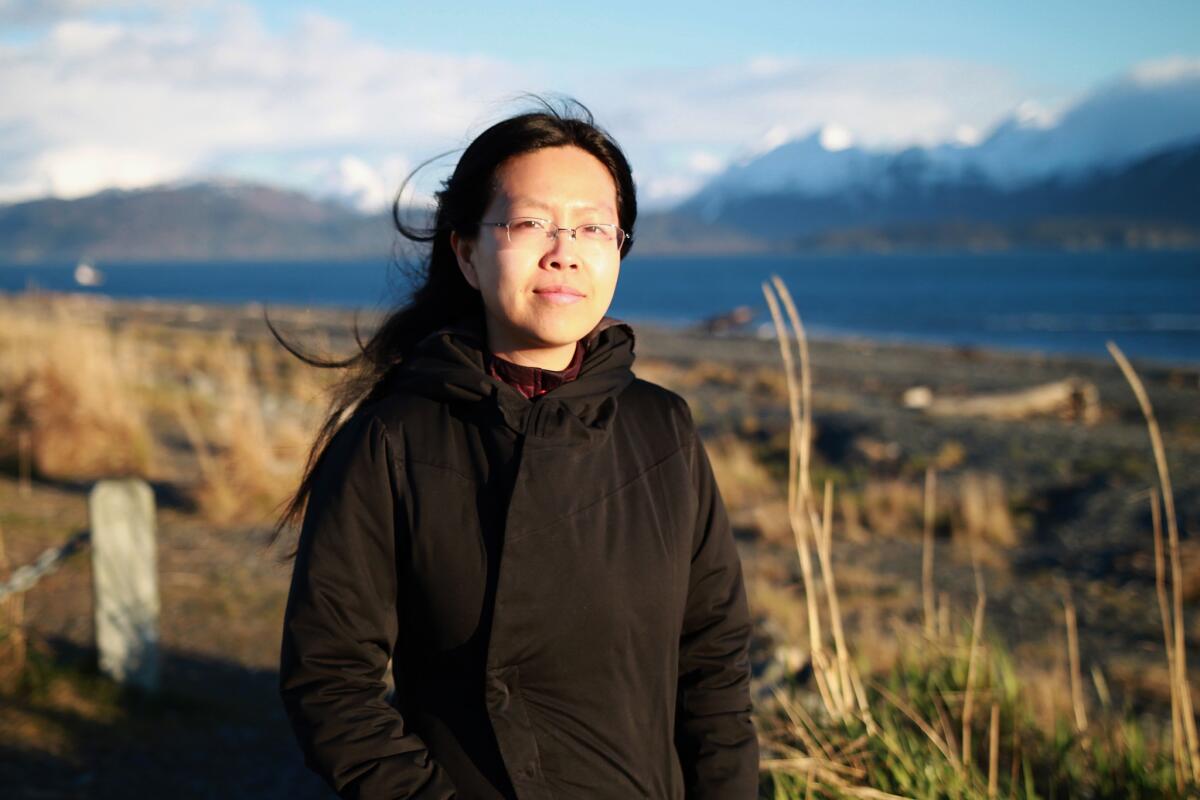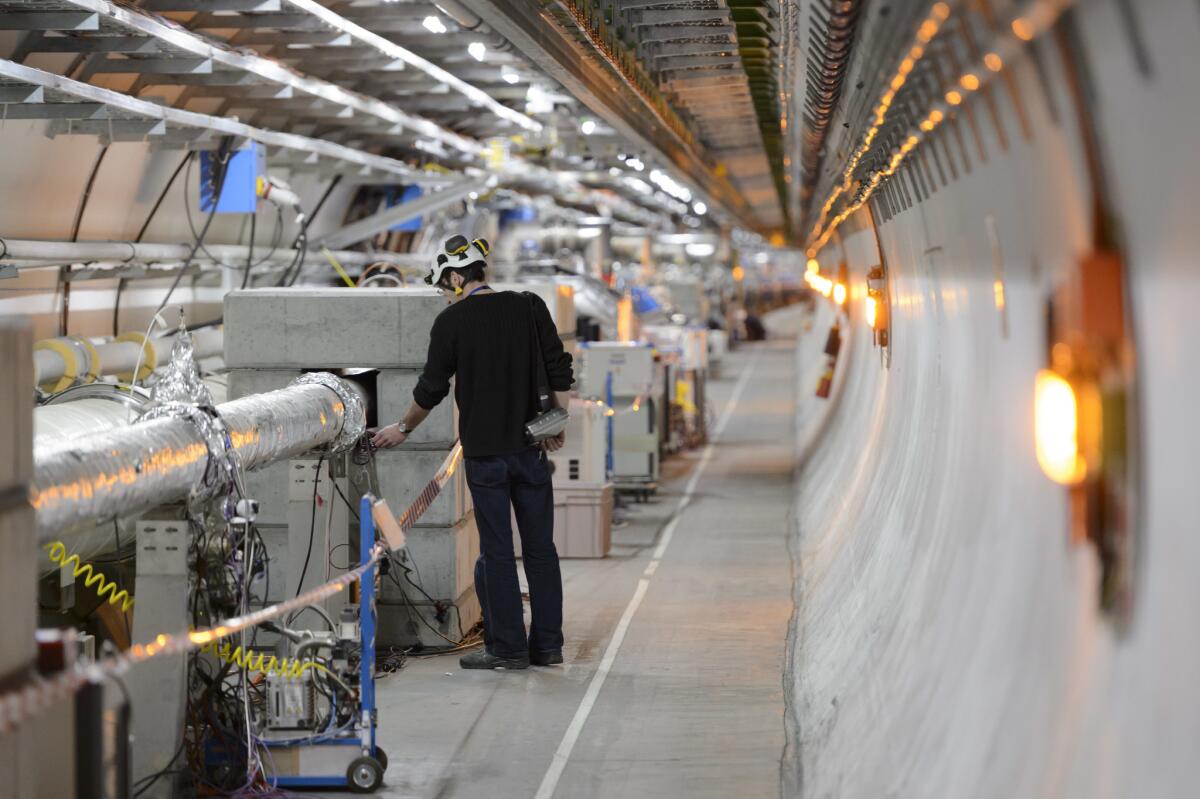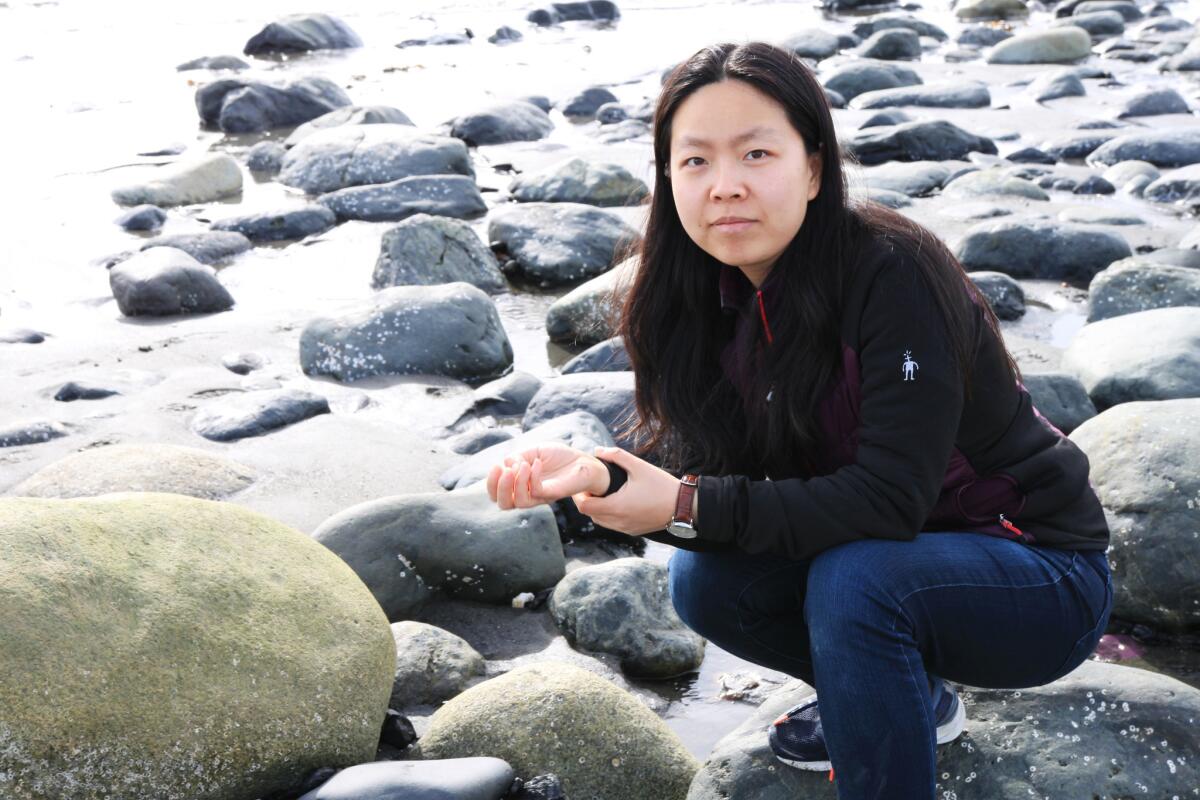What to study after finding the elusive Higgs boson? For one physicist, it’s compassion

Reporting from Homer, Alaska — A glacial mist still covers the trees that surround this dead-end road, making it hard to distinguish dawn from dusk. Someone stands in the distance. I’ve driven this road countless times but have never seen a hitchhiker this far. The weather is bitter and she has a ways to go, so I slide to a stop.
She carries a light backpack and speaks with a slight foreign accent. “Could you take me to Bishop’s Beach?” says the young woman with long, dark hair and a shy smile as she climbs into my car, stomping mud from her boots.
Though it’s a long way from tourist season, she introduces herself as a traveler. It’s an interesting time for a visit to this small town, steeped in winter, that has seen many locals flee to where the sun still rises early.
See the most-read stories this hour >>
“I don’t care about the weather,” says the woman as she peers out the car window at the edge of the boreal forest, a landscape lifted out of legends.
Her name, she says, is Mingming Yang. Four years ago, near the Swiss-French border, she had taken a different journey. As a PhD student at MIT, she was one of the central figures in a team of scientists who searched for the Higgs boson, a long-theorized but never-before-observed subatomic particle. It exists for less than a fraction of a second, and yet its discovery, possibly the greatest of modern physics, helps explain the origins of mass in the universe.
Yang had been chosen to present some key results that led to the discovery, before they were announced to the public, at the European Organization for Nuclear Research, known as CERN, in June 2012.

More recently, she was selected for a prestigious Owen Chamberlain fellowship at the Lawrence Berkeley National Laboratory. Instead, she turned it down and boarded a plane to the wild north. “The fundamental purpose of science is to enrich the human spirit, to pursue the truth and beauty of this world,” she told me.
She came here, to the end of the road in Homer, Alaska, to continue her exploration into different dimensions.
“The world doesn’t need one more physics professor,” she says.
::
The Higgs particle is a ripple in the Higgs field that gives fundamental particles mass. The more strongly a particle interacts with the Higgs field, the more it has mass. The field permeates all of space and is believed to have emerged at the birth of the universe. Yang compares it to an ocean.
“It drags down the ‘particle’ fish from swimming at the speed of light,” she explains.
We reach town and head to the glacier-blue Kachemak Bay. Her eyes scanning the Kenai Mountain range, she tells me that we are made up of the same fundamental particles as these mountains.

Captivated by this chance encounter, I wrap my little daughter on my back and we continue to hike the gravel shore together.
Passing through the tide line, a tangle of eagle feathers, seaweed and driftwood, Yang remembers walking to school in China. The only child of a maritime officer and a pediatrician, she had a childhood that was happy and relaxed with little constraint. During her hourlong walks to high school, surrounded by the urbanized scenery of Nanjing, she started to run out of everyday thoughts.
Her focus shifted to the fundamental questions. Why do we exist? What is the ultimate reality?
Those questions are, as she puts it, what landed her at CERN, where some of the world’s leading scientists are probing the fundamental structure of the universe with the aid of the Large Hadron Collider, the largest and most complex machine in human history.
The strategy for producing the elusive Higgs boson was to collide protons again and again at nearly the speed of light.
See the most-read stories in Science this hour >>
The decay matter of a Higgs particle can be measured for only an instant before it disintegrates. The chance of producing one is extremely rare: Yang’s team searched for the particle backward in time by detecting one of its five main expected decay products, through millions of billions of collisions.
Afterward, what led her to travel without a definite plan was a desire to “de-focus,” or rather, to focus on something else — on “humanity as a whole,” on “compassion.”
Here in coastal Alaska, she has hiked throughout small communities and talked to those who live in them, from commercial fishermen struggling to support their families to native Inupiaq people who dance to preserve a connection to an ancient culture.
“There are similarities in fishing in the Bering Sea and hunting for the Higgs boson from the sea of data,” Yang says. “The extreme hardship, the camaraderie, the dedication and passion to the search, meanwhile confronting the power and beauty of nature.”
::
A few days pass until we meet again at a local natural history museum. It’s an overcast Monday at noon, and the small auditorium starts filling with people. Her presentation was prompted by a spontaneous meeting with a retired local mechanic with an interest in physics.
Her talk meanders from the discovery of the Higgs boson to the meaning of life, emphasizing the parallel journeys of connection and discovery.
Her message seemed clear to those assembled: “Our humanity is where our brilliance lies,” interprets Dylan Braund, a Bristol Bay fisherman who’d come to hear her speak. “We are here to do the best that we can do and thereby contribute our verse to the symphony of humanity.”
Yang says she feels a sense of responsibility to explain the significance of the momentous discovery, and the beauty of the human endeavor that achieved it.
In the days after the Higgs boson findings were publicly announced, Yang remembers, the whole world was swirling. But the center of the storm — the students and researchers whose devotion had led to the discovery — was silent. Sleep-deprived and physically exhausted, they continued their work while the rest of the world celebrated. Though no honors or credit were given, she says, they smiled from deep inside.
“We had already been awarded by nature itself.”
::
We are again at the beach, and the humpback whales are back in the bay — a month early. Our conversations about the cosmos have shifted into charting the trials we face here in this small community of 5,300 on the edge of the Kenai Peninsula. Our town’s livelihood depends on the health of the ocean. I want this to remain for when my daughter is our age, but when I see the ice of nearby Doroshin Glacier in constant retreat, it feels like time is running through my fingers like water.
Yang tells me that the scientists on her team have never aimed to exploit or conquer what they find; they are content to understand and connect with it.
“I am often asked, ‘What is the use of the Higgs boson?’ ” she says. “I want to say, ‘It is not to make use of.’ ”
Luokkala is a special correspondent.
MORE NATIONAL NEWS
Fired hospital worker’s case points to a trail of stolen drugs and thousands of patients at risk
California Latino Republicans see Prop. 187’s ghost in Trump’s campaign
Proposed cuts in aid to Cubans could save taxpayers billions
More to Read
Sign up for Essential California
The most important California stories and recommendations in your inbox every morning.
You may occasionally receive promotional content from the Los Angeles Times.










